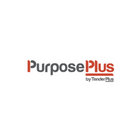
By Purpose Plus Industry Leading Grant Support
Applying for a grant is challenging and developing a formal response to set criteria, even more so. We know that demonstrating alignment with eligibility criteria and addressing the key evaluation requirements is essential to having your best chance of grant success, so how do you ensure your application is compliant and distinguished from others?
Here are six tips to help you produce compelling responses and hold the attention of assessors.
1. Understand your impact
Appreciating how well you can clearly articulate who will benefit, directly and indirectly, from your proposed activities, will assist in determining your differentiators and drafting detailed responses.
Workshop what this looks like before putting pen to paper, ensuring you have hard data or evidence to back it up. What are the changes that you expect to result from the proposed initiative, and how will you measure these?
2. Develop a Drafting Guide
Typically only one or two pages, this guide will provide one source of truth relevant for your team’s agreed grant writing conventions, problem words and application-specific terminology. This guide will help everyone involved in drafting responses and will ensure a consistent approach is taken throughout the entire application. This guide is especially valuable when multiple contributors are drafting or reviewing responses, consistency is critical across different sections, and complex concepts need to be articulated clearly.
3. Answer all parts of the question
This includes any requirements that may be listed in separate guidelines, assessment criteria and reference documents. Once you understand all of the elements that need to be covered in the response, adding logical sub-headings will assist and ensure all parts of the question are addressed.
If attaching accompanying information, such as insurance certificates, impact reporting, certifications, and other common artefacts for grant application compliance, make sure these have clear and consistent naming and are accurate and up to date.
4. Use graphics to help tell a story
Where allowed or where page limits permit, consider breaking up pages of text by including graphics to keep the evaluator’s attention. Graphics must be associated with the content in some way and should always be referred to within the response. A good graphic can also replace sections of text or tabulated data, for example, a sequential bulleted list can usually become a flow chart and depending on the content, a table can easily become a matrix, generating more interest in the content. Graphics are not always permitted, but, when possible, they can add significant value to your submission.
5. Detail your evidence
Once you have detailed your initiative or solution, you need to be able to demonstrate that you can deliver. Stating the changes or impact you expect to result from the initiative, and how you will measure them is one step, but providing evidence of your experience delivering similar results is essential. Case studies highlighting successful outcomes with similar solutions and appropriate letters of support are helpful with this.
6. Articulate the benefits
In grant applications, it’s not enough to describe your activities – your benefits should be well-defined including the extent to which your solution meets or exceeds requirements. Go beyond listing outputs and focus on the tangible and intangible value created for the target community. Ensure that you have explicitly connected the benefits of your initiative to the outcomes the funder is seeking.
.png?lang=en-AU&ext=.png)
.png?lang=en-AU&ext=.png)

.png?lang=en-AU&ext=.png)